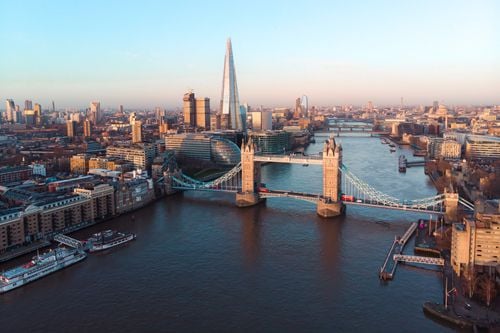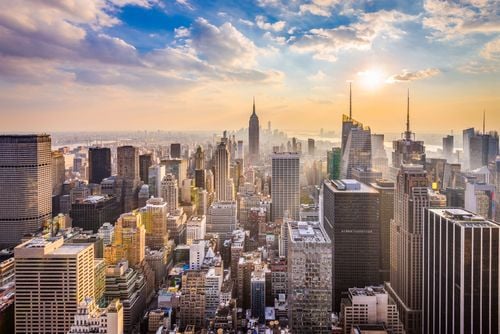The word "bukchon" means "northern village". It is a natural name for the village today, given its location to the north of Jogno and Cheonggyecheon, two of Seoul's main landmarks. The district was built in the 15th century during the Joseon dynasty as a residential area for the nobility and senior government officials, who worked in the neighbouring palaces.
Perhaps one of Seoul's most important districts, Bukchon Hanok village is home to a collection of around a hundred traditional houses (hanok). Situated on a hill between Gyeongbokgung Palace and Changdeokgung Palace, the village was originally home to high-ranking government officials and the nobility, but has now been transformed into a residential area. It has gained notoriety for its timeless architecture. A number of charming, historic houses stand with elegant sloping roofs, all made of wood and decorative stained glass. This is undoubtedly the most Instagrammable place in Seoul... with the modern landscape contrasting with the village in the background. To immerse yourself in this ancient setting, wear a hanbok. The village is still active today. Some remain private residences, but most of the traditional houses have been converted into guesthouses, tea rooms, restaurants and museums to give visitors a glimpse of Korea in days gone by.
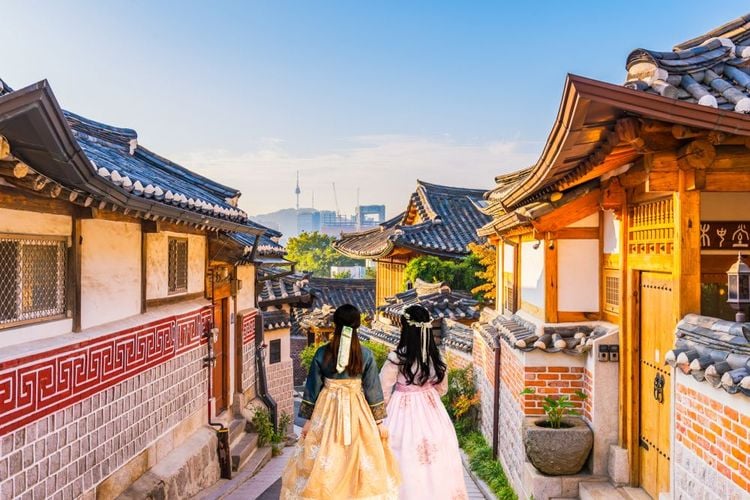
Flashback
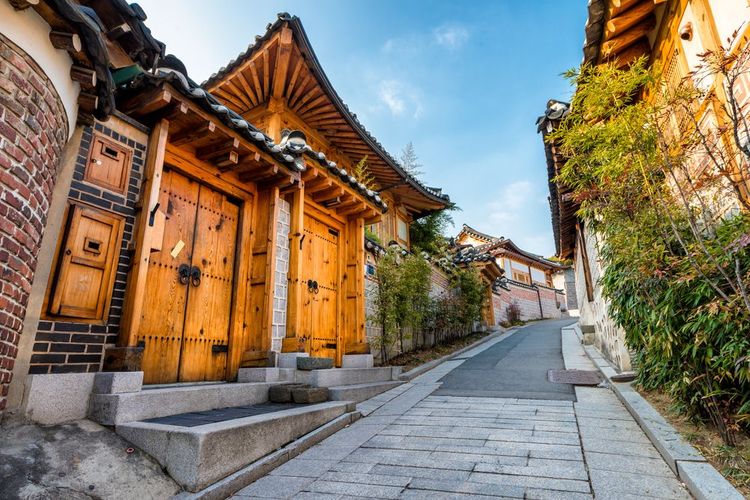
Traditional Korean architecture at Bukchon Hanok village in Seoul
- © Joshua Davenport / ShutterstockToday, the area is still residential and some houses are inhabited. The village is freely accessible, but certain rules must be respected: do not enter the houses without authorisation, and respect the premises.

Bukchon village architecture
- © Kampon / ShutterstockPractical information
⏰ Times:
Although there are no set times for the area to be open or closed, visitors are strongly encouraged to come only between normal working hours; not too early before people get up, and not too late when people are asleep.
What to see and what to do
While many visitors are content to take photos as they meander through the narrow streets between the graceful houses, others prefer to delve deeply into Korean history by exploring the various museums and cultural centres located in the village of Bukchon Hanok.
- Bukchon Traditional Culture Centre: this multi-purpose complex located in a hanok house welcomes visitors with a wide range of activities and experiences. Calligraphy classes, tea ceremonies and history lectures are just some of the opportunities on offer for the curious.
Practical information
⏰ Opening hours: weekdays: 9am to 6pm; weekends: 10am to 5pm

Tea ceremony in Seoul
- © rainsoop / ShutterstockBukchon Museum of Asian Cultural Art: housed in a Hanok house with an imposing stone door, the Bukchon Museum of Asian Cultural Art invites visitors to admire its private collection of works of art. Added bonus: cooking classes and folk painting workshops are held in the museum.
Gahoe Museum: although it may look small from the outside, this museum houses over 2,000 historical Korean artefacts ranging from folk art to religious amulets. Folk painting courses are also available.
Opening times: Tuesday - Sunday, 10.00 am to 6.00 pm
- Hanbok hire: one of the most popular activities in Bukchon is to dress up in Hanbok, a traditional dress, and stroll through the historic streets. The dress comes in several sizes and colours. Hanboks are also available for men in sizes XS to XXL, and for women in sizes XS to 4XL.
Practical information
📍 Address: 2nd floor, 4 Bukchon-ro 5-gil, Jongno-gu / opening hours: 9am to 7pm
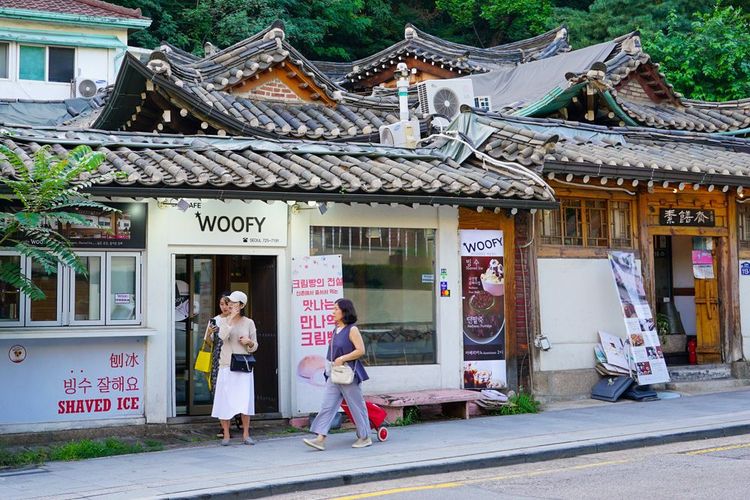
Bukchon Hanok Village, café in an old traditional building.
- © Shcherbakov Ilya / Shutterstock- Hansangsoo Embroidery Museum: textiles and folk art have a special place in Korean culture. The Hansangsoo Embroidery Museum was created by master embroidery artist Han Sangsoo, who has been awarded the unusual title of "Important Intangible Cultural Property" by the Korean government. The museum has three exhibition halls and offers patchwork and embroidery classes.
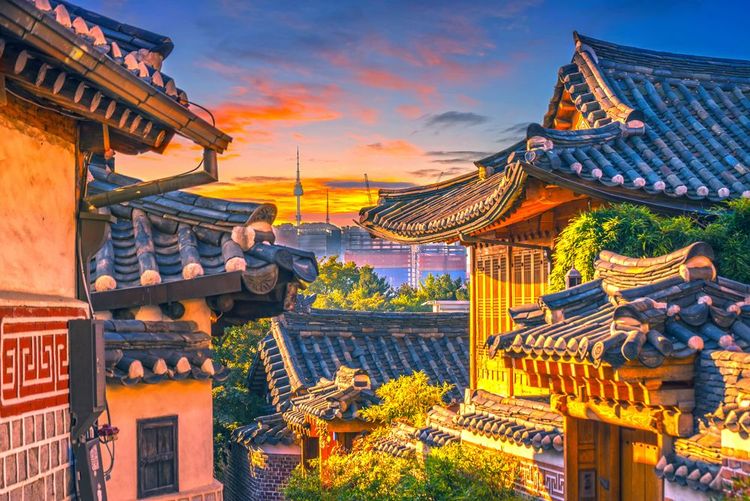
The village of Bukchon Hanok by night
- © TRAVEL TAKE PHOTOS / ShutterstockPractical information
🍴 Where to eat?
There's no shortage of places to eat in this ancient village! Despite its old-fashioned exterior, visitors will find a variety of fancy cafés and modern restaurants.
Bukchon Samgyetang is a popular place to sample its traditional soup made from whole chicken stuffed with garlic, ginger and herbs, and cooked in a ginseng broth. Meals are served in a simple dining room with low tables and cushions on the floor.
Cha Masineun Tteul: the most typical Korean teahouse in the village of Bukchon Hanok is Cha Masineun Tteul, set in a cosy hanok overlooking Gyeongbokgung Palace. Cushions on the floor double as chairs, and the menu offers a wide range of teas (such as ginger, apricot and quince).
🏠 Where to stayThe village of Bukchon Hanok is one of the best places in town to enjoy a traditional experience: sleeping in a Hanok. Bonum 1957 is a magnificent traditional and modern house with beautiful bathrooms.
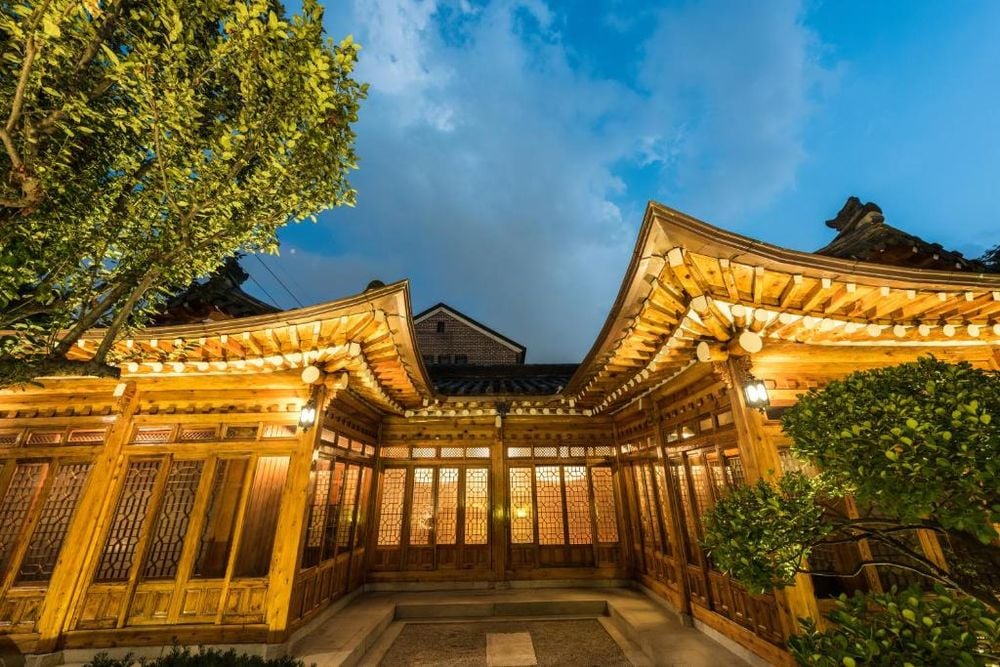 Seoul
Seoul
Bonum 1957 Hanok and Boutique
Located in Seoul, less than 1 km from Changdeokgung Palace, Bonum 1957 Hanok and Boutique offers concierge services, non-smoking rooms and a garden.🚌 How do I get to the village of Bukchon Hanok?
By metro: Anguk metro station, exit 3. Turn left at the first street. Walk a little uphill to the Bukchon cultural centre.


